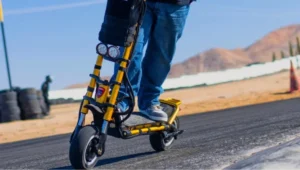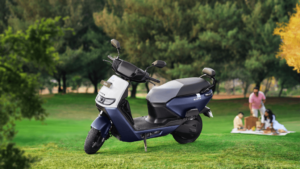Maintaining your battery scooty is crucial for ensuring its longevity, performance, and safety. While regular maintenance may seem daunting, many tasks can be easily performed at home with basic tools and minimal expertise. This guide provides step-by-step instructions and tips for DIY battery scooty maintenance.
1. Regular Cleaning
Keeping your battery scooty clean not only enhances its appearance but also prevents dirt and grime from affecting its components. Here’s how to clean your scooty effectively:
- Materials Needed: Soft cloth or sponge, mild detergent, water, and a bucket.
- Steps:
- Dilute the detergent in water to create a soapy solution.
- Dampen the cloth or sponge with the solution and gently wipe down the exterior surfaces, including the frame, handlebars, and seat.
- Pay special attention to areas prone to dirt buildup, such as the wheels and undercarriage.
- Rinse thoroughly with clean water and dry with a towel to prevent water spots.
2. Battery Care
The battery is the most critical component of your electric scooty. Proper care can extend its lifespan and maintain optimal performance.
- Charging: Follow the manufacturer’s guidelines for charging your battery. Avoid overcharging, and never let the battery fully discharge before recharging.
- Storage: If you plan to store your scooty for an extended period, partially charge the battery (around 50%) and store it in a cool, dry place.
- Cleaning: Periodically check the battery terminals for corrosion or dirt buildup. Clean them with a wire brush and a solution of baking soda and water if necessary. Ensure the terminals are dry before reconnecting.
3. Tire Maintenance
Maintaining proper tire pressure is essential for safety and performance. Underinflated tires can affect handling and increase the risk of punctures.
- Check Pressure: Use a tire pressure gauge to check the pressure regularly, ideally before each ride. Refer to the manufacturer’s recommendations for the correct pressure.
- Inflation: Inflate the tires to the recommended pressure using a bicycle pump or air compressor. Avoid overinflating, as it can lead to a harsh ride and increased risk of blowouts.
- Tread Inspection: Periodically inspect the tire tread for signs of wear and tear. Replace the tires if the tread depth is below the recommended level or if you notice any cuts or punctures.
4. Brake Inspection and Adjustment
Properly functioning brakes are crucial for safety. Regular inspection and adjustment ensure optimal braking performance.
- Visual Inspection: Check the brake pads for wear and replace them if they appear thin or worn out. Also, inspect the brake cables for signs of fraying or damage.
- Adjustment: If the brakes feel loose or unresponsive, adjust the brake cable tension using the adjuster nut located near the brake lever. Refer to the owner’s manual for specific instructions.
- Lubrication: Apply a small amount of lubricant to the brake pivot points and cables to ensure smooth operation.
5. Lubrication
Lubricating moving parts helps reduce friction and wear, ensuring smooth operation and extending component lifespan.
- Chain Lubrication: Apply chain lubricant to the scooter’s chain regularly to prevent rust and ensure smooth movement. Wipe off any excess lubricant to avoid attracting dirt.
- Moving Parts: Lubricate other moving parts, such as hinges and pivot points, with a light machine oil or silicone lubricant as needed.
6. Inspection of Electrical Components
Regularly inspecting electrical components ensures proper functioning and reduces the risk of issues while riding.
- Lights: Check the headlights, taillights, and turn signals to ensure they are working correctly. Replace any bulbs that have burned out.
- Wiring: Inspect the wiring harness for signs of damage or wear. Replace any damaged wires or connectors to prevent electrical issues.
7. Test Ride
After performing maintenance tasks, take your scooty for a test ride to ensure everything is working correctly. Pay attention to any unusual noises, vibrations, or handling issues, which may indicate underlying problems that require further attention.
Conclusion
Regular maintenance is essential for keeping your battery scooty in top condition and ensuring a safe and enjoyable riding experience.
By following these DIY maintenance tips and performing routine inspections, you can prolong the lifespan of your electric ride and avoid costly repairs.
Remember to consult the owner’s manual for specific maintenance guidelines and seek professional assistance if you encounter any complex issues.
With proper care and attention, your battery scooty will continue to serve you well for years to come.



